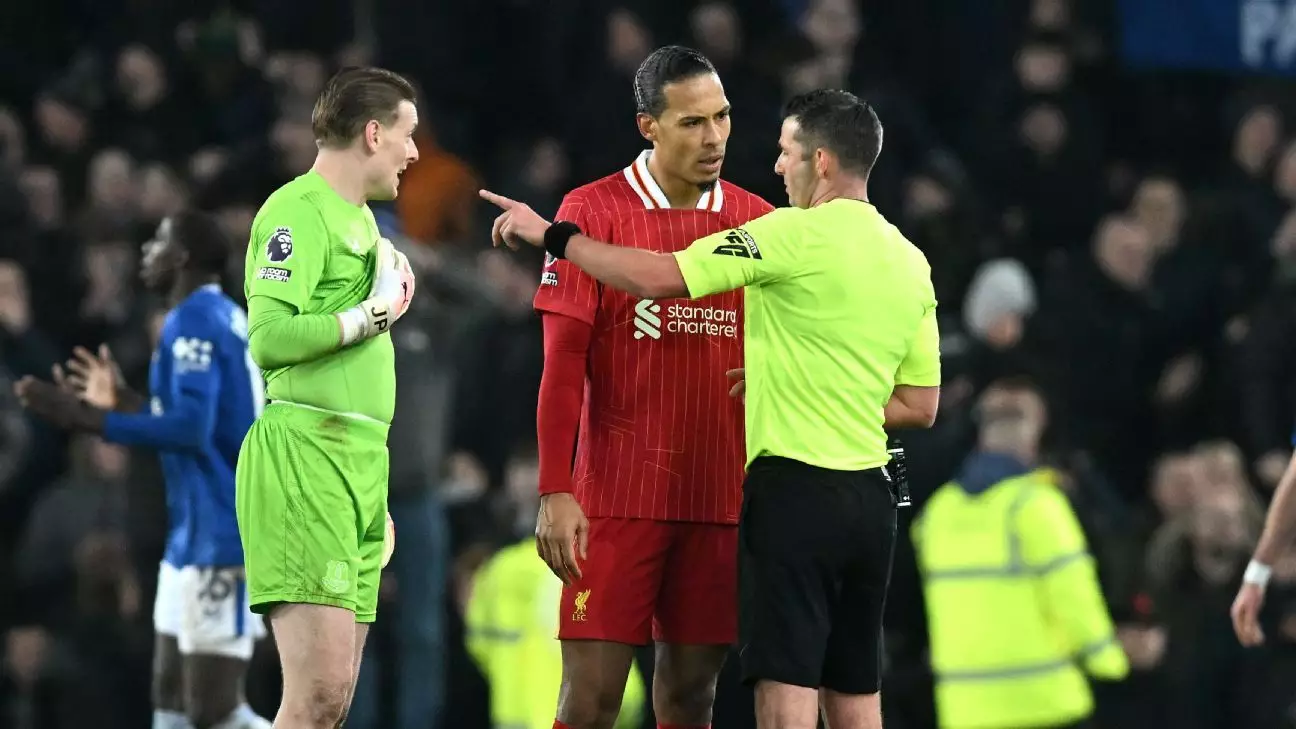The recent Merseyside derby culminated in a dramatic 2-2 draw that not only thrilled fans but also left a cloud of controversy hanging over both teams. The game, held at Goodison Park, was supposed to be a showcase of local football rivalry; however, it quickly devolved into chaos as tempers flared and decisions made by the referee significantly influenced the outcome. The match was marked by four red cards issued after full-time, illustrating the fraught emotions that accompanied this fixture.
Liverpool’s captain, Virgil van Dijk, was vocal in his criticism of referee Michael Oliver, asserting that he “lost control” during a match that had moments brimming with tension. The climax of the game came with Everton’s James Tarkowski scoring a stunning volley in stoppage time, which ignited a passionate celebration that ultimately spiraled into a confrontation between players and fans. Van Dijk noted that the officials failed to manage the tensions effectively, which ultimately detracted from what could have been a defining moment in the derby’s storied history.
The decision to send off both Curtis Jones and Abdoulaye Doucouré reflects a critical lack of communication and judgment by the match officials. Oliver’s inability to maintain control during the celebrations led to an explosive reaction that culminated in a brawl, leaving one to question whether the referee was prepared for the intensity of a derby match.
On the sidelines, both managers expressed their sentiments in the aftermath. Everton’s manager, David Moyes, interpreted the heated ending as a fitting close to the final derby at Goodison Park. While he did not address the scuffles directly, his comments suggested a sense of pride in how his team rallied against Liverpool’s powerful side. Moyes recognized that not every derby needs to be a polished display of football; sometimes, a scrum means passion and commitment from both sides.
Conversely, Liverpool’s manager, Arne Slot, found himself barred from addressing the media due to his own red card, which followed his vociferous protests at the officiating. This absence brought forth even more questions about decision-making on the touchline, as Slot was unable to express his viewpoint about the match and its controversies.
Ultimately, the chaos of the Merseyside derby echoes a larger theme often present in heated local rivalries: the fine line between passion and pandemonium. The aftermath of this match leaves both teams reflecting on how to cope with such incidents moving forward. With the focus not solely on the scores but also on the conduct and control within the match, the repercussions may carry over into upcoming fixtures.
Fans may walk away with mixed feelings, knowing that while their teams showed resilience and fervor, the administrative side of the game failed to contain the spiraling events. As the dust settles on this chaotic derby, lessons learned may serve to prepare both clubs for their future encounters, setting the stage for what remains an enduring footballing rivalry amid all its fervor and unpredictability.


Leave a Reply